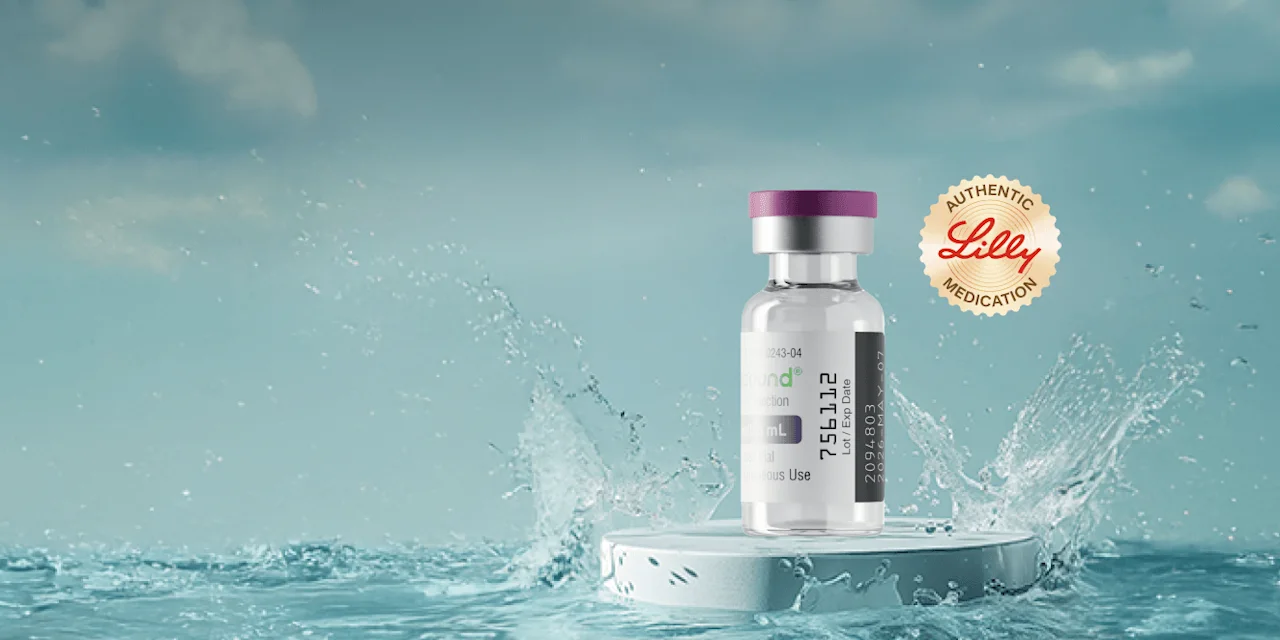Here's what we'll cover
With the right tools, living with type 2 diabetes doesn’t have to be daunting. You can manage type 2 diabetes—and potentially prevent complications—with medications including Trulicity and Ozempic.
Healthcare providers typically add Trulicity or Ozempic when one diabetes medication isn’t helping enough to control blood sugar levels. But how do you know if Trulicity vs. Ozempic is right for you? Continue reading to learn about the similarities and differences between Trulicity and Ozempic.
What are Trulicity and Ozempic?
Trulicity (dulaglutide) and Ozempic (semaglutide) belong to a drug class called glucagon-like peptide-1 (GLP-1) receptor agonists.
Your healthcare provider may prescribe this type of medication to people with type 2 diabetes mellitus when other medications, such as metformin, aren’t effective enough at controlling a person’s blood sugar.
Seven medications currently belong to the GLP-1 drug class. All of them are injectable medications, except Rybelsus is an oral tablet version of semaglutide (the same active ingredient in Ozempic). Keep reading to learn more about the specifics.
Trulicity
Trulicity is a brand-name prescription drug that contains the active ingredient dulaglutide. It comes as a clear liquid solution in an injection pen with a built-in needle. Each Trulicity pen contains a single dose.
After a healthcare professional shows you how to use Trulicity, you’ll give yourself a subcutaneous (under the skin) injection in your thigh or abdomen once a week. If someone else helps you with your injection, they may also administer it in the upper arm.
Ozempic
Ozempic is a brand-name prescription drug that contains the active ingredient semaglutide. It comes as a clear liquid solution in an injection pen. Ozempic comes with needles you’ll attach to the pen before each dose. Each Ozempic pen contains multiple doses. The exact number of doses per pen depends on your healthcare provider’s recommended dosage.
After your provider shows you how to use Ozempic, you’ll give yourself a subcutaneous injection in your thigh or abdomen once weekly. Like Trulicity, if someone else assists you with your injection, it can also be injected into the upper arm.
Dosage of Trulicity vs. Ozempic
The typical starting dosage of Trulicity is 0.75 mg once per week. After four weeks of treatment, your healthcare provider may increase your dose to 1.5 mg once per week. After another month, they may increase your dose to 3 mg once per week.
If your blood sugar levels remain too high after another month, they may increase your dose to the maximum of 4.5 mg once per week.
The typical starting dosage of Ozempic is 0.25 mg once per week. Again, after four weeks of treatment, your healthcare provider may increase your dose to 0.5 mg once per week. After another month, they may increase your dose to 1 mg, and later to a maximum of 2 mg once per week, if additional blood sugar control is needed.
Conditions treated with Trulicity vs. Ozempic
The U.S. Food and Drug Administration (FDA) approves medications, such as Trulicity and Ozempic, for specific uses or indications described in detail on each drug’s official labeling (summarized in the sections below).
Healthcare providers may also prescribe Trulicity or Ozempic for off-label (“non-official”) uses, such as weight loss.
Trulicity uses
Trulicity is used to:
Improve control of blood sugar levels in adults with type 2 diabetes, along with a healthy diet and exercise
Reduce the risk of major cardiovascular problems (such as heart attack and stroke) in adults with type 2 diabetes who also have heart disease or multiple cardiovascular risk factors
Cardiovascular risk factors include obesity, smoking, high blood pressure, high cholesterol, and a sedentary lifestyle.
Ozempic uses
Ozempic is used to:
Improve control of blood sugar levels in adults with type 2 diabetes, along with a healthy diet and exercise
Reduce the risk of major cardiovascular problems (such as heart attack and stroke) in adults with type 2 diabetes who also have heart disease
How effective are Trulicity and Ozempic?
Both Trulicity and Ozempic are effective medications for treating type 2 diabetes. However, some research has found a slight difference in the effectiveness of managing blood sugar levels and reaching weight loss goals between Trulicity vs. Ozempic.
One study from 2018 compared the effectiveness of Trulicity and Ozempic to lower average blood sugar levels over a 3-month period. Ozempic lowered blood sugar and reduced body weight more than Trulicity.
Side effects of Trulicity vs. Ozempic
Trulicity and Ozempic cause similar common side effects, including:
Nausea
Vomiting
Diarrhea
Abdominal pain
Constipation
Trulicity also commonly causes decreased appetite. These side effects may contribute to weight loss. Rarely, Trulicity and Ozempic may cause severe side effects like:
Pancreatitis (inflammation of the pancreas)
Kidney problems
Vision changes
Severe allergic reactions
Increased risk of medullary thyroid carcinoma (MTC), a type of thyroid tumor
Some people may be at higher risk for these serious side effects than others. These drugs may not be safe if you have multiple endocrine neoplasia syndrome or a family history of thyroid cancer. Trulicity and Ozempic are not meant for use while pregnant or breastfeeding or in people with type 1 diabetes, a history of pancreatitis, or severe stomach problems such as gastroparesis.
Potential drug interactions of Trulicity vs. Ozempic
Both Trulicity and Ozempic can raise the chance of having hypoglycemia (low blood sugar) if you take other diabetes medications, such as:
Glimepiride (Amaryl)
Glipizide (Glucotrol)
Glyburide (Diabeta)
Insulin, such as Lantus, Humulin, Novolog, and many others
Nateglinide
Repaglinide
Your healthcare provider will go over how to monitor your blood sugar and what to do if it gets too low.
Trulicity and Ozempic may cause you to absorb certain oral medications more slowly. For example, if you take warfarin, a blood thinner medicine, your healthcare provider may monitor you more closely to see if they need to adjust your warfarin dosage.
It’s a good idea to tell your healthcare provider and pharmacist about all the drugs you take so that they can help prevent harmful interactions.
Cost of Trulicity vs. Ozempic
Both Trulicity and Ozempic are brand-name prescription drugs that are not currently available in generic forms. That means they can be quite pricey. As of June 2023, both drugs are available for around $800 - $1,000 for a month’s supply.
The price you’ll pay may be lower if you have health insurance with prescription drug coverage. Patient assistance programs and manufacturer coupons can also help you save money. Talk to your pharmacist if you are looking for ways to help lower your cost of Trulicity or Ozempic.
Differences and similarities between Trulicity vs. Ozempic
Some key information about Trulicity and Ozempic is summarized in the table below.
trulicity | ozempic | |
|---|---|---|
Active ingredient | dulaglutide | semaglutide |
What comes in the box? | 4 single-dose injection pens with built-in needles | 1 or 2 multi-dose injection pens and needles that you attach before each dose |
What does it do? | Improves control of blood sugar levels in adults with type 2 diabetes, along with a healthy diet and exercise Reduces the risk of major cardiovascular problems (such as heart attack and stroke) in adults with type 2 diabetes and cardiovascular disease or multiple cardiovascular risk factors | Improves control of blood sugar levels in adults with type 2 diabetes, along with a healthy diet and exercise Reduces the risk of major cardiovascular problems (such as heart attack and stroke) in adults with type 2 diabetes and cardiovascular disease |
Most common side effects | Nausea, vomiting, diarrhea, belly pain, constipation, decreased appetite | Nausea, vomiting, diarrhea, belly pain, constipation |
Typical dosage schedule | Once per week | Once per week |
Drug interactions | Hypoglycemia (low blood sugar) risk if taking other diabetes medications; Slowed absorption of certain oral medications | Hypoglycemia (low blood sugar) risk if taking other diabetes medications; Slowed absorption of certain oral medications |
If other medications aren’t doing the trick to manage your blood sugar levels and achieve your weight loss goals, talk to your healthcare provider about Trulicity and Ozempic. One of these options may be right for you. Your provider will help you develop a safe treatment plan.
DISCLAIMER
If you have any medical questions or concerns, please talk to your healthcare provider. The articles on Health Guide are underpinned by peer-reviewed research and information drawn from medical societies and governmental agencies. However, they are not a substitute for professional medical advice, diagnosis, or treatment.
Ozempic Important Safety Information: Read more about serious warnings and safety info.
Collins, L. & Costello, R. A. (2021). Glucagon-like peptide-1 receptor agonists. StatPearls . Retrieved on Feb. 9, 2022 from https://www.ncbi.nlm.nih.gov/books/NBK551568/
GoodRx-a. (n.d.). Ozempic. Retrieved on Feb. 9, 2022 from https://www.goodrx.com/ozempic
GoodRx-b. (n.d.). Trulicity. Retrieved on Feb. 9, 2022 from https://www.goodrx.com/trulicity
Olvera-Lopez, E., Ballard, B. D., & Jan, A. (2021). Cardiovascular disease. StatPearls . Retrieved on Feb. 9., 2022 from https://www.ncbi.nlm.nih.gov/books/NBK535419/
Pratley, R. E., Aroda, V. R., Lingvay, I., et al. (2018). Semaglutide versus Dulaglutide once weekly in patients with type 2 diabetes (sustain 7): A randomised, open-label, phase 3B trial. The Lancet Diabetes & Endocrinology , 6 (4), 275–286. doi: 10.1016/S2213-8587(18)30024-X. Retrieved from https://pubmed.ncbi.nlm.nih.gov/29397376/
U.S. Food and Drug Administration (FDA-a). (2021). Ozempic (semaglutide) injection, for subcutaneous use. Retrieved from https://www.accessdata.fda.gov/drugsatfda_docs/label/2021/209637s008lbl.pdf
U.S. Food and Drug Administration (FDA-b). (2021). Trulicity (dulaglutide) injection, for subcutaneous use. Retrieved from https://www.accessdata.fda.gov/drugsatfda_docs/label/2021/125469s044lbl.pdf
U.S. Food and Drug Administration (FDA). (n.d.). Drugs@FDA: FDA-approved drugs. Retrieved on Feb. 9, 2022 from https://www.accessdata.fda.gov/scripts/cder/daf/










